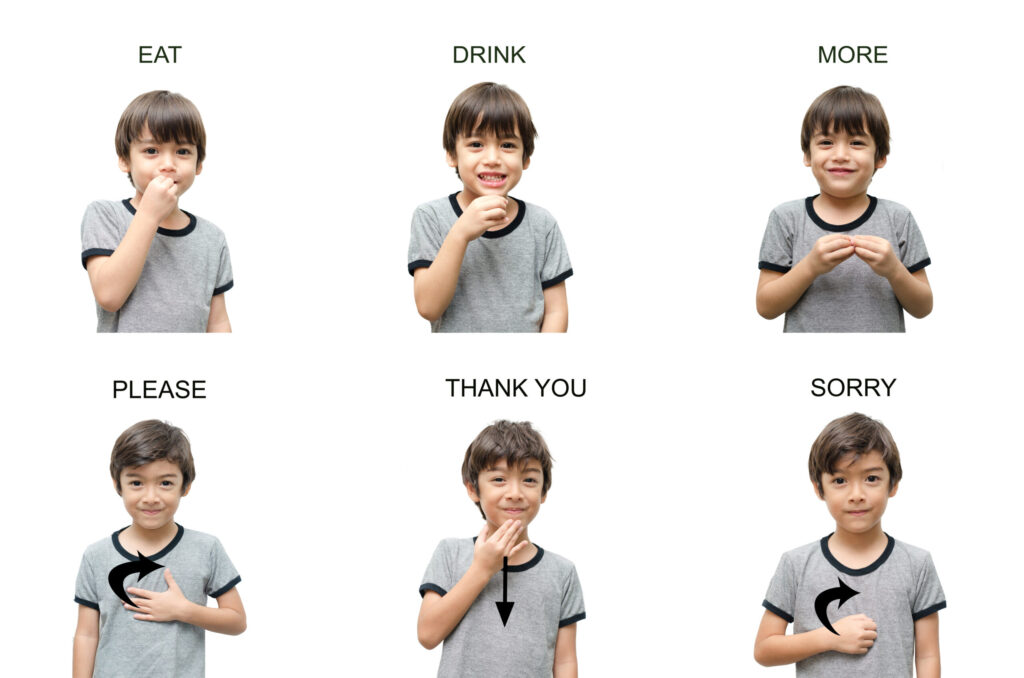When children are first learning to communicate, they may experience challenges or frustrations associated with making their wants and needs known. Until they develop the appropriate expressive language and motor speech skills required for fully expressing themselves, they rely on parents or caregivers to guess what they are wanting. This can lead to lots of “guess work” on the part of the caregiver, which may result in both parties feeling frustrated!
Taking a multimodal approach to language development is very useful for not only teaching functional vocabulary, but also for helping little ones express themselves while their motor speech skills catch up. This may actually allow your child to start learning language before they are able to verbally talk! Did you know you can start to teach babies signs as early as 6 months old? Introducing sign language to your baby is an excellent way to promote their language skills, even if they are not verbalizing yet.
Here’s how to introduce signs to your baby:
- When you are modeling a word to your child, say the word 3 times and model the sign with it. Be sure to give lots of wait time in order to encourage imitation.
- They may need your help initially with holding their hands the right way or performing the correct gesture. Remember, when children are learning to speak they don’t always pronounce a word the right way at first. Sign language is no different! You may see what are called “sign approximations.” These are attempts at producing a sign, but might not have the accurate finger placements or movements. It is important to honor all attempts at producing a sign, even if it is not completely accurate. Keep modeling the correct hand position for your child as they are learning.
- Repeat the signs they are learning throughout the day in multiple contexts. For example, you can model “open” as you are opening a jar, a toy box, a book, a door, etc.
- If a child is unable to imitate the sign, just continue to model rather than forcing them to try it until they become frustrated.
- Finally, be patient. It may take several weeks or months to learn a sign, but remember, children are very observant and watch what you are doing even if it doesn’t always feel like it!
Here are some of the best early signs to start out with:
- More
- All done
- Eat
- Play
- Open
- Help
- Want
- Car
- Ball
- Go

